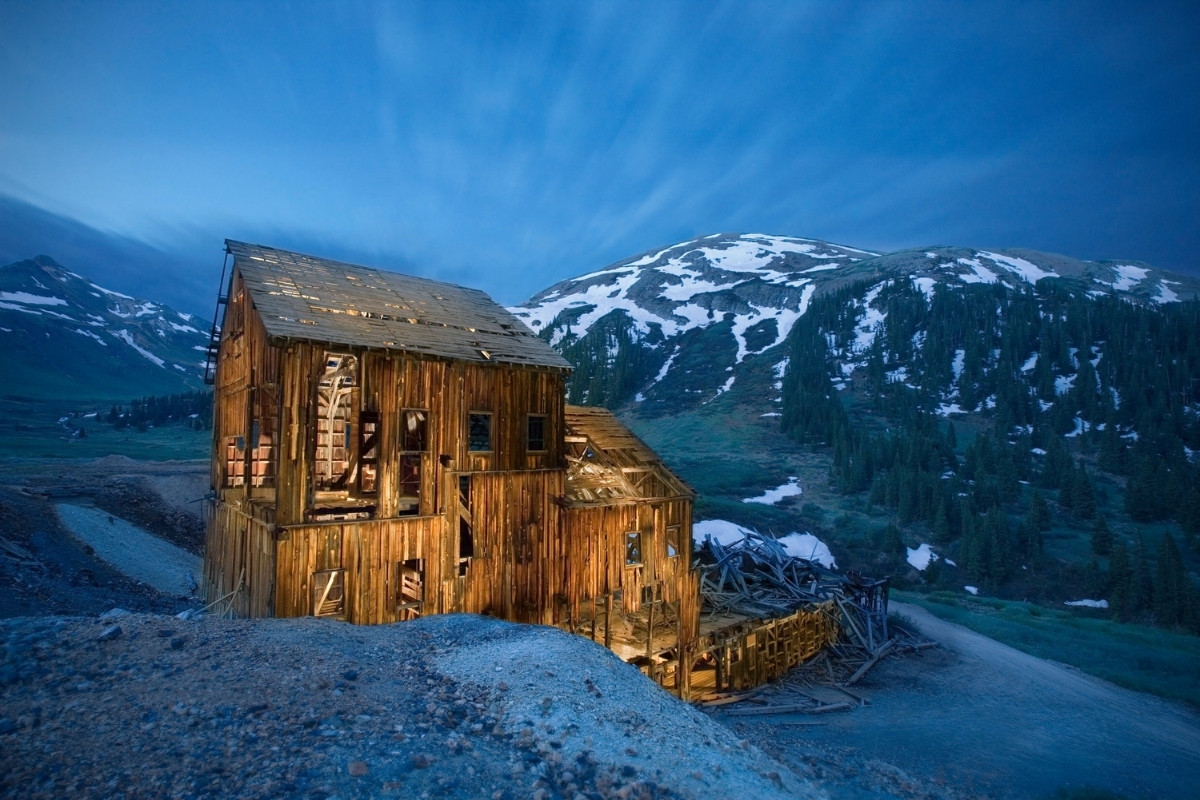Secrets Of Colorado’s Alpine Loop Ghost Towns

Ever wondered what it feels like to step back in time? Colorado's Alpine Loop Ghost Towns offer a unique glimpse into the past. Nestled high in the San Juan Mountains, these abandoned towns tell stories of gold rush dreams and rugged pioneer life. Imagine walking through old wooden buildings, peeking into saloons, and exploring mines that once buzzed with activity. The scenery is breathtaking, with towering peaks, lush meadows, and crystal-clear streams. Whether you're an avid history buff or just love a good adventure, these ghost towns provide an unforgettable experience. Ready to uncover the secrets of Colorado's hidden past? Let's dive in!
Secrets of Colorado's Alpine Loop Ghost Towns
Colorado's Alpine Loop offers a unique blend of history, adventure, and stunning landscapes. This scenic byway, nestled in the San Juan Mountains, is home to several ghost towns that once thrived during the mining boom. These abandoned towns now stand as silent witnesses to a bygone era, each with its own story to tell. Let's uncover the secrets of these fascinating ghost towns.
1. Animas Forks
Animas Forks, one of the most popular ghost towns along the Alpine Loop, was established in 1873. At its peak, it boasted a bustling community with a post office, general store, and several saloons. Today, visitors can explore the well-preserved buildings, including the iconic Duncan House, which offers a glimpse into the lives of the miners who once called this place home.
2. Capitol City
Capitol City, founded in 1877, was ambitiously named with hopes of becoming the capital of Colorado. Although that dream never materialized, the town flourished briefly with a population of around 400. Now, only a few structures remain, including the old post office and a couple of cabins. The town's serene setting makes it a perfect spot for a quiet picnic while pondering its ambitious past.
3. Mineral Point
Mineral Point, established in the early 1880s, was a small but significant mining town. It featured several mines, a schoolhouse, and a few homes. The town's remote location and harsh winters led to its decline. Today, visitors can see the remnants of the old schoolhouse and a few mining structures, offering a glimpse into the challenges faced by its residents.
4. Sherman
Sherman, founded in the late 1870s, was a thriving mining town with a population of around 300. It had a hotel, saloons, and a school. The town's prosperity was short-lived, and by the early 1900s, it was abandoned. Visitors can explore the remains of the old hotel and a few other structures, all set against the backdrop of the stunning San Juan Mountains.
5. Carson
Carson, established in the 1880s, was a remote mining town that never grew very large. It had a few homes, a post office, and several mines. The town's isolation and harsh conditions led to its abandonment. Today, the town's ruins, including the old post office and a few cabins, offer a hauntingly beautiful glimpse into its past.
6. Howardsville
Howardsville, founded in 1874, was one of the first mining towns in the area. It served as a supply center for nearby mines and had a post office, general store, and several homes. The town's decline began in the early 1900s, and it was eventually abandoned. Visitors can explore the remnants of the old general store and a few other buildings, all set in a picturesque valley.
7. Eureka
Eureka, established in the 1870s, was a bustling mining town with a population of around 500. It had a hotel, saloons, and several businesses. The town's decline began in the early 1900s, and it was eventually abandoned. Today, visitors can see the remains of the old hotel and a few other structures, all set against the stunning backdrop of the San Juan Mountains.
8. Ironton
Ironton, founded in 1883, was a significant mining town with a population of around 1,000. It had a post office, general store, and several saloons. The town's decline began in the early 1900s, and it was eventually abandoned. Visitors can explore the remnants of the old post office and a few other buildings, all set in a picturesque valley.
9. Red Mountain Town
Red Mountain Town, established in the late 1870s, was a thriving mining town with a population of around 1,000. It had a hotel, saloons, and several businesses. The town's decline began in the early 1900s, and it was eventually abandoned. Today, visitors can see the remains of the old hotel and a few other structures, all set against the stunning backdrop of the San Juan Mountains.
10. Silverton
Silverton, founded in 1874, is one of the few ghost towns that still has a small population. It was a significant mining town with a population of around 2,000 at its peak. The town has several well-preserved buildings, including the old courthouse and a few saloons. Visitors can explore the town's rich history and enjoy the stunning scenery of the San Juan Mountains.
Discover the Magic of Colorado's Ghost Towns
Colorado's Alpine Loop ghost towns offer a unique glimpse into the past. Exploring these abandoned places, you can almost hear the echoes of miners and settlers who once called them home. Each town has its own story, from the bustling days of Animas Forks to the quiet remnants of Carson. The rugged beauty of the San Juan Mountains adds to the allure, making every visit an adventure.
Whether you're a history buff, a nature lover, or just looking for a new experience, these ghost towns won't disappoint. Remember to respect the sites, as they are fragile pieces of history. Pack your camera, wear sturdy shoes, and get ready to step back in time. The magic of Colorado's ghost towns awaits, offering memories that will last a lifetime.

